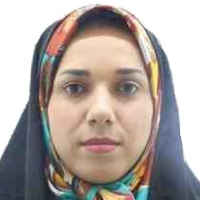Formal and Informal Social Participation and Factors Affecting it (A Study in The City of Amol)
Author(s):
Article Type:
Research/Original Article (دارای رتبه معتبر)
Abstract:
Introduction
Achieving progress without having a collective life and engaging with other people and in the form of a multi-disciplinary interactive process is not possible. In other words, with the assumption of a society, in order to achieve development, one of the essential conditions must be provided: the presence of participation. A bond or partnership between members of the community leads to the development of society. Therefore, participation in all its dimensions, in particular social participation, is one of the requirements of social life. In this paper, participation in social dimension is examined. Therefore, it is important to achieve a precise cognition of the extent of social participation and factors affecting it and it is essential to achieve a sustainable development, especially sustainable development. Accordingly, the purpose of this study was to study the social participation of people over the age of 18 who live in Amol city. The influence of factors such as power structure in the family, family orientation on social participation and the use of communication media on the level of social participation. In other words, we can say that the present article seeks to answer the following questions: a. What is the rate of social participation? b. What are the factors influencing social participation? The researchers are determined to identify the ways to strengthen social participation by finding a scientific and experimental response to the above questions, in order to portray the prospect for officials and practitioners in order to achieve a thorough and comprehensive planning on the path to urban and rural development. Take great strides.Material &
Methods
The research method is a survey and a cross-sectional research design, using a questionnaire technique to collect data. Based on the latest census in the Statistical Center of Iran in 2011, the population of the research is all individuals over the age of 18 living in urban and rural areas of Amol, which is 281,457. In order to select the sample size, a multi-stage cluster sampling method was used and the sample size was calculated using Cochran formula 382 (222 samples in the city and 160 samples in the village). Finally, 386 questionnaires were analyzed. Descriptive and inferential statistics (t test, analysis of variance and multiple regression) were used to analyze the collected data using SPSS software. In order to investigate the validity of the questionnaire, the faculty credentials were used and referring to experts in this field. Also, in the present study, to obtain acceptable reliability, Cranachs alpha statistic, matched consistency and internal consistency of the questionnaire were provided.Discussion of Results &
Conclusions
Regarding the purpose of this study and the findings, the total social participation among respondents was moderate. But the rate of informal social participation is greater than the level of formal participation. Regarding the historical context of our society, it has been observed that traditional (informal) partnerships and collaborations have long existed among tribes, villagers, and townspeople in various mourning and weddings, as well as economic and livelihood activities. Also, the statistical results of the research show that social participation in the rural areas has been more than urban ones. The social participation between the variables of power in the family, the domestic media, education, socio-economic status and length of stay in the location and had a positive significant relationship. But the authoritarian power structure in the family, use of foreign media has been significant inverse relationship. Multiple regression analysis revealed that the independent variables to study social participation of citizens Amol played a major role in explaining and explaining the derived value of 24.1 percent. Keywords:
Language:
Persian
Published:
Journal of Applied Sociology the University of Isfahan, Volume:29 Issue: 3, 2018
Pages:
67 to 86
magiran.com/p1869376
دانلود و مطالعه متن این مقاله با یکی از روشهای زیر امکان پذیر است:
اشتراک شخصی
با عضویت و پرداخت آنلاین حق اشتراک یکساله به مبلغ 1,390,000ريال میتوانید 70 عنوان مطلب دانلود کنید!
اشتراک سازمانی
به کتابخانه دانشگاه یا محل کار خود پیشنهاد کنید تا اشتراک سازمانی این پایگاه را برای دسترسی نامحدود همه کاربران به متن مطالب تهیه نمایند!
توجه!
- حق عضویت دریافتی صرف حمایت از نشریات عضو و نگهداری، تکمیل و توسعه مگیران میشود.
- پرداخت حق اشتراک و دانلود مقالات اجازه بازنشر آن در سایر رسانههای چاپی و دیجیتال را به کاربر نمیدهد.
دسترسی سراسری کاربران دانشگاه پیام نور!
اعضای هیئت علمی و دانشجویان دانشگاه پیام نور در سراسر کشور، در صورت ثبت نام با ایمیل دانشگاهی، تا پایان فروردین ماه 1403 به مقالات سایت دسترسی خواهند داشت!
In order to view content subscription is required
Personal subscription
Subscribe magiran.com for 70 € euros via PayPal and download 70 articles during a year.
Organization subscription
Please contact us to subscribe your university or library for unlimited access!



